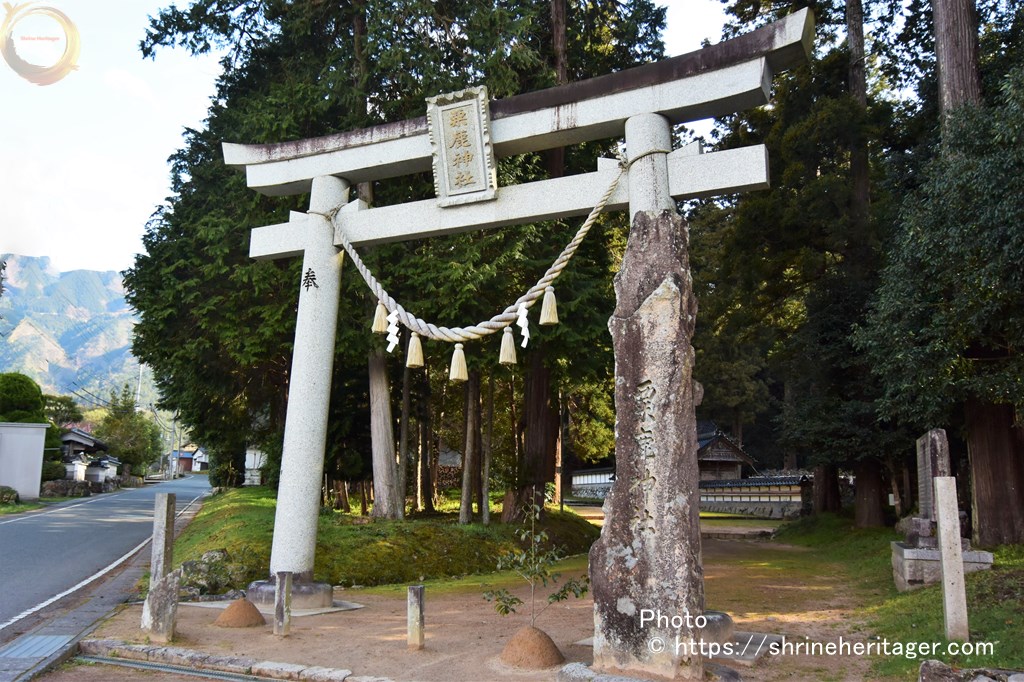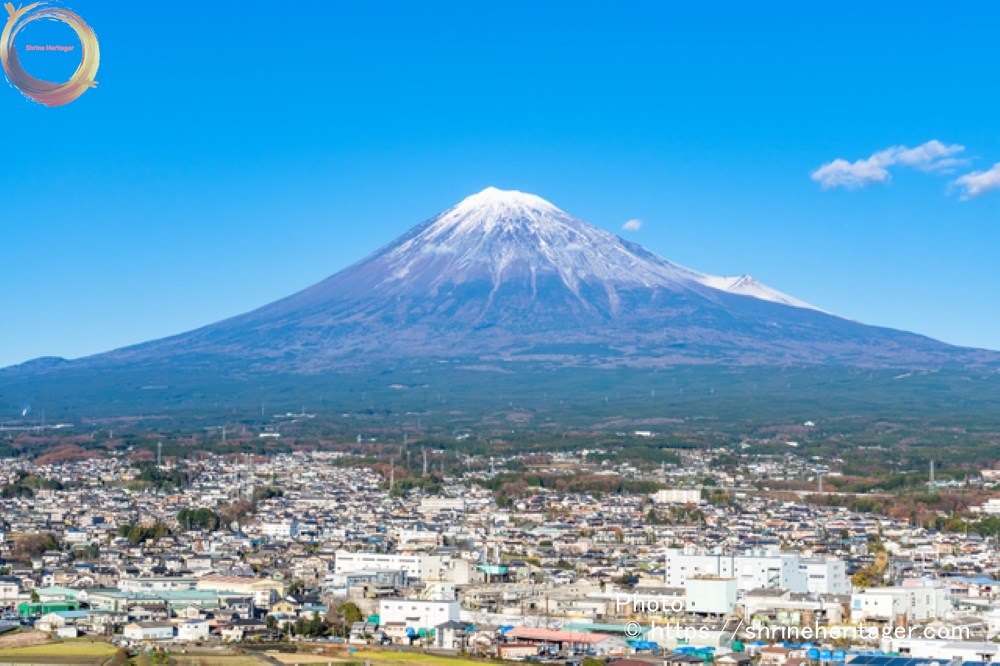According to the company biography, ashiga Shrine is said to be the origin of the name of The Deer, which is said to have been the best ancient shrine in Tajima Province, which is said to have been enshrined as the most ancient shrine in Tajima Province, where deer emerged from Mt. Ashiga and taught farming to people.
目次
- 1 1.ご紹介(Introduction)
- 2 この神社の予備知識(Preliminary knowledge of this shrine)
- 2.1 【延喜式神名帳】(engishiki jimmeicho)The shrine record was completed in December 927 AD.
- 2.2 【オタッキーポイント】(Points selected by Japanese Otaku)
あなたが この神社に興味が湧くような予備知識をオタク視点でご紹介します
- 2.2.1 On "Hikomasu no mikoto" of the god of the festival
- 2.2.2 Kojiki( Kojiki) Nakamaki In the article of Emperor Sojin, it is written as the dispatch of the shogun.
- 2.2.3 On the Children and Descendants of The Son of The Sunoko Zao in The Middle Volume of Kojiki
- 2.2.4 According to Kojiki, there are a total of 15 children of The Son of The Zao, 12 princes and three princesses. In the article of the 11th "Emperor Taruhito", the descendants of Nisoko Zao appear in the article of "Kojiki" Naka volume
- 2.2.5 On the Ancestors of Empress Jingong
- 3 Visit the Shrine (Pray at the Shrine)
- 4 神社の伝承(Old tales handed down to shrines)
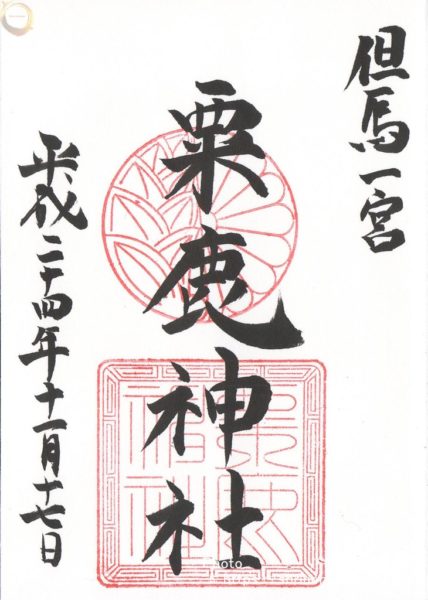
1.ご紹介(Introduction)
The official name of this shrine and how to be called The present address and map I will introduce the history of the god and the shrine enshrined.
【神社名(shrine name)】
粟鹿神社(awaga shrine)
(あわがじんじゃ)
[通称名(Common name)]
【鎮座地 (location) 】
2152 Awaga, Santo-cho, Asago City, Hyogo Prefecture
[地 図 (Google Map)]
【御祭神 (God's name to pray)】
《主》天美佐利命(ameno misari no mikoto) 大国主命の御子
《主》日子坐王(hikoimasu no mikoto) 開化天皇の第三皇子
《主》日子穂穂手見尊(hiko hohotemi no mikoto) 古事記に傳へる山狭知昆古
【御神格 (God's great power)】(ご利益)
【格 式 (Rules of dignity) 】
・『延喜式神名帳(engishiki jimmeicho)』所載社
・ 但馬国一之宮
【創 建 (Beginning of history)】
In the first year of Wado (708), a manuscript of The Great Myojin of Awaga, which detailed the gods of the festival and successive priests, remains (in the Imperial Household Agency)
Our company is called the god of national land development as tajima country's oldest company. It was a large shrine where the reverence of the inhabitants gathered not only in japan but also in several countries in the vicinity, and it was lined up in Meishin Taisha in the system of Shintoku high and Enki.
At the time of the 10th Emperor Sujin of the Emperor Sujin, the third prince, Prince Higo zao, was appointed as one of the four-way shoguns to the key Tamba dojin of the Sanin and Hokuriku roads, and he marched the Tamba yen and shook the imperial power in great way, responding to the emperor's will.
At the foot of Mt. Ashiga, Awaga-go is the site of the end of the king's 薨, and the double-湟 moat behind the Ashiga Shrine and the enfun behind the existing main shrine are historic sites of the King's Buried Place. Former prefectural company.From the Hyogo Shrine Agency website
【由 緒 (history)】
From the shrine distribution history

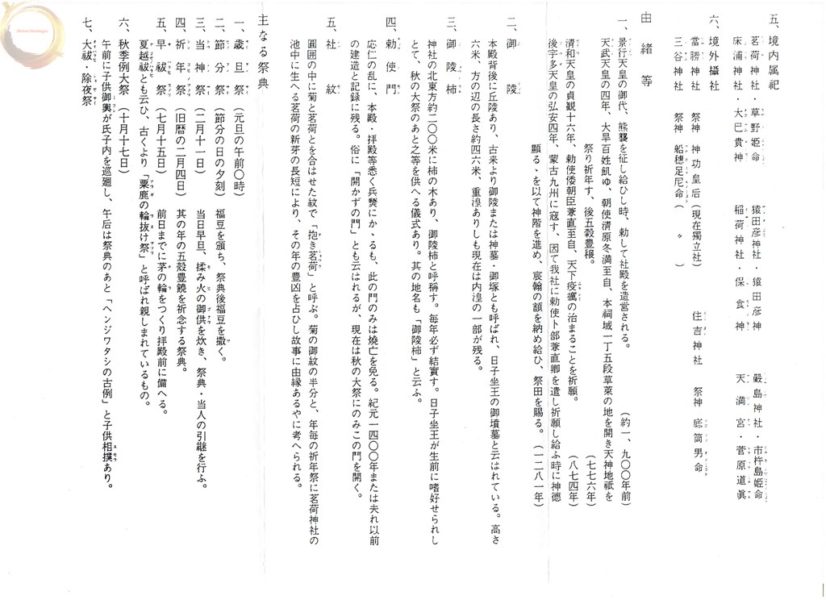
【境内社 (Other deities within the precincts)】
・ Myoga Shrine
《主》草野姫命(kayanohime no mikoto)

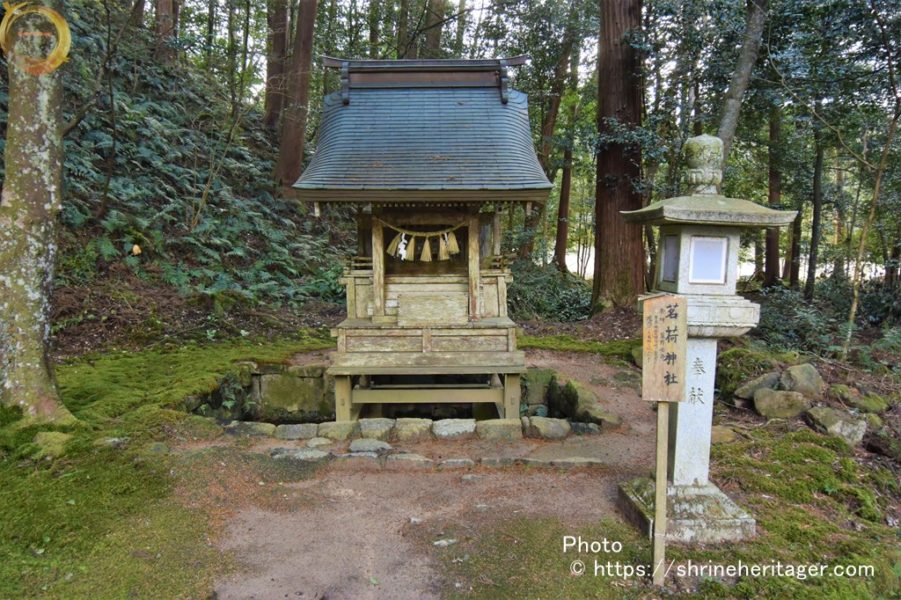
・床浦(tokora)神社
《主》大己貴神(onamuchi no mikoto)
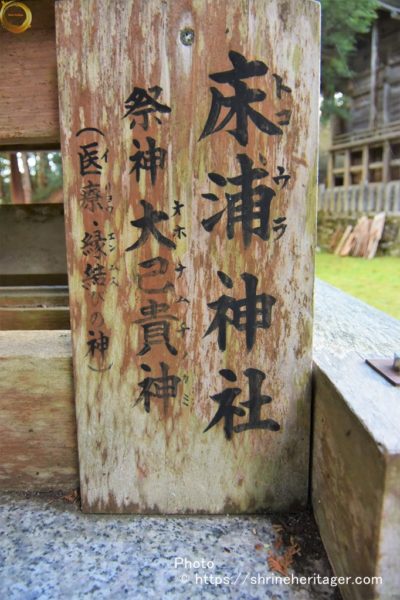
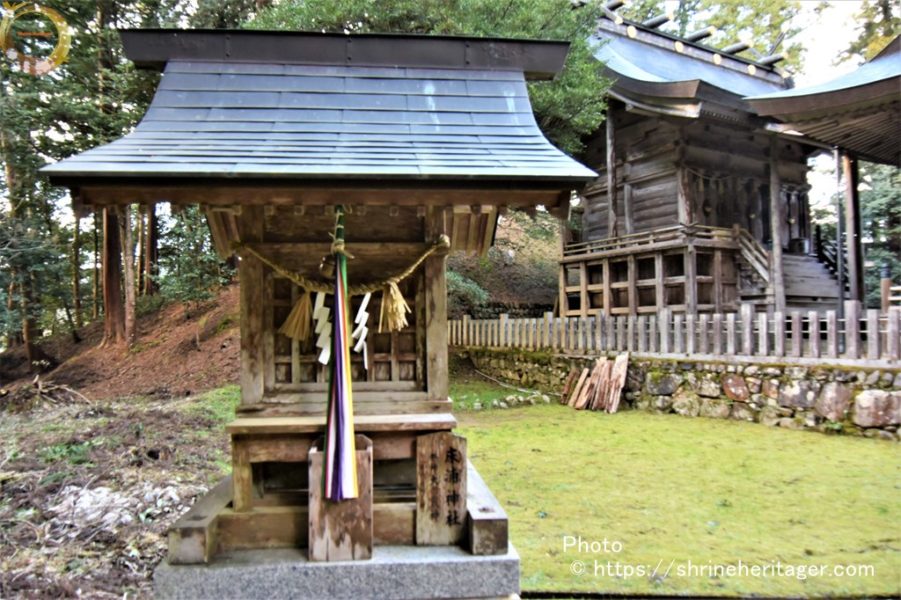
・猿田彦(sarutahiko)神社
《主》猿田彦神(sarutahiko no kami)
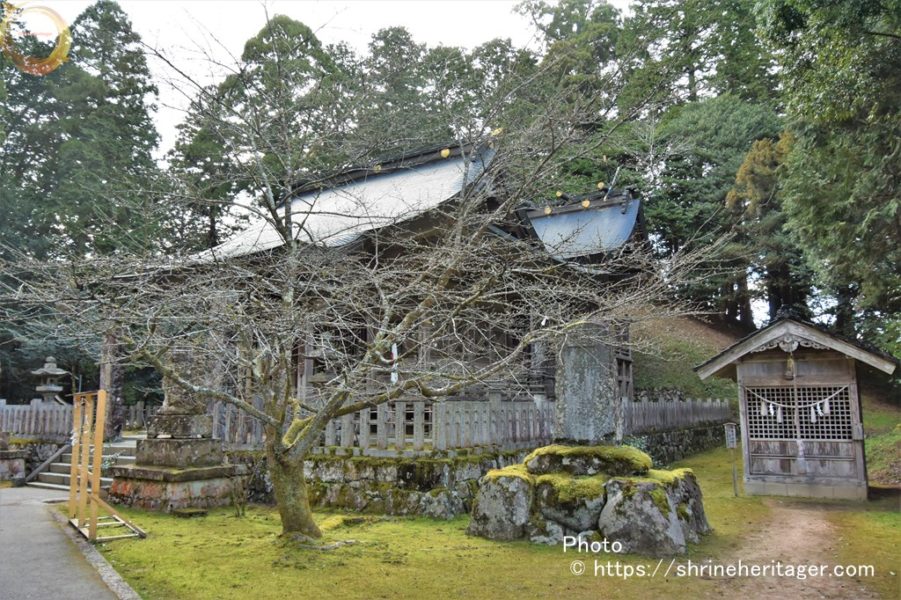
・稲荷(inari)神社
《主》保食神(ukemochi no kami)
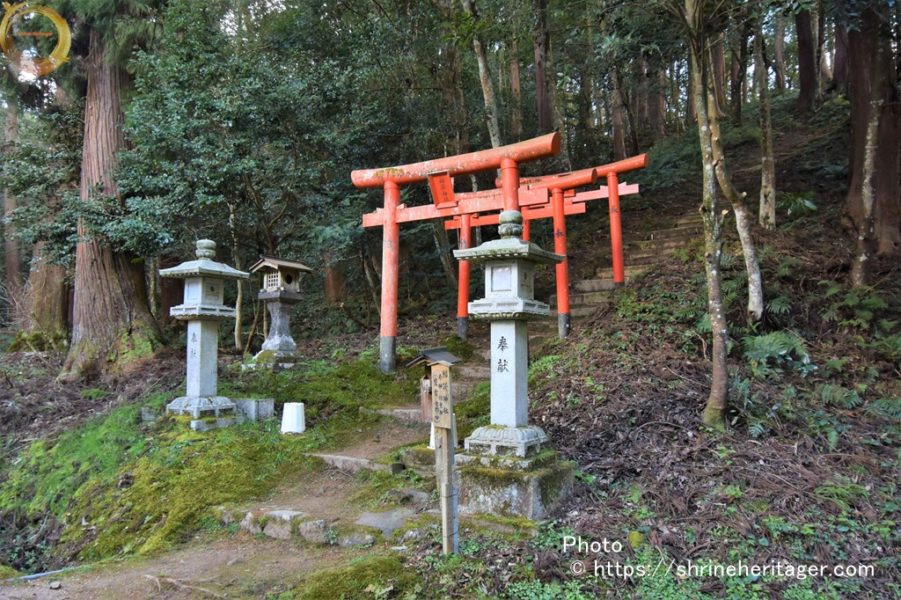
・厳島(itsukushima)神社
《主》市杵島姫命(ichikihime no mikoto)
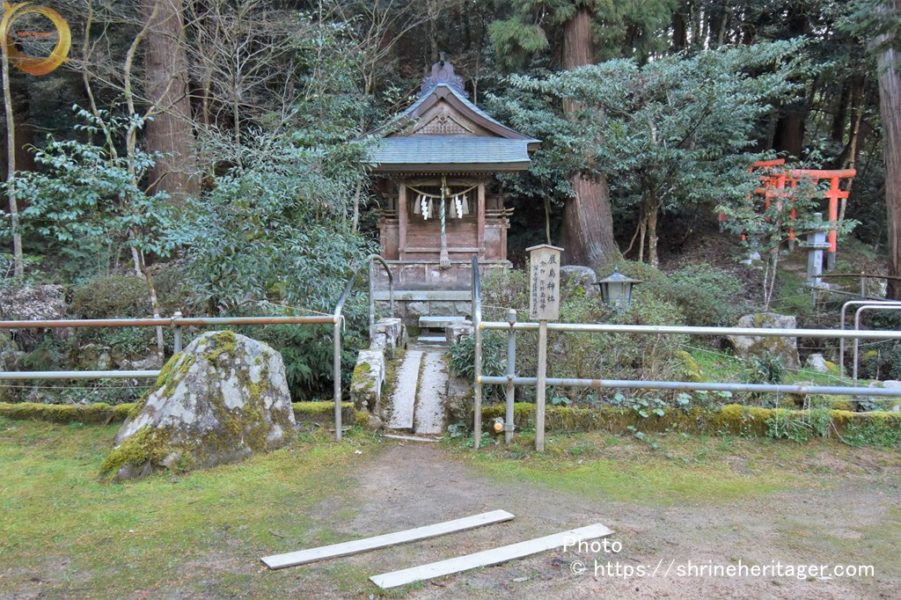
・天満(temman)宮
《主》管原道眞公(sugawara no michizane ko)
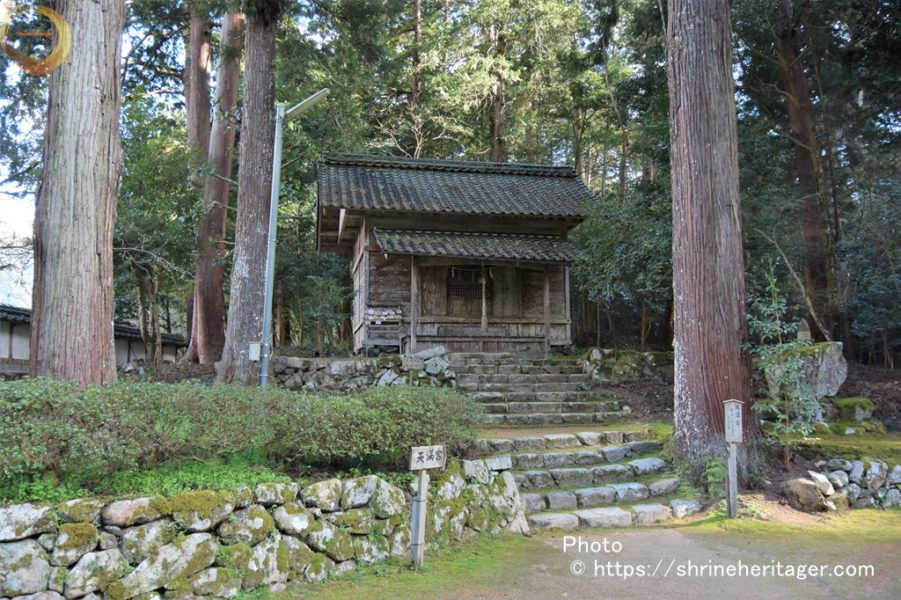
スポンサーリンク
この神社の予備知識(Preliminary knowledge of this shrine)
This shrine has a long history.
『延喜式神名帳(engishiki jimmeicho)』The two volumes that are regarded as important among all 50 ritual- style scrolls created by the Imperial Court during the middle Heian period are called " engishiki jimmeicho " (edited in December 927). Approximately 1100 years ago, the name of "2861 company" and the number of gods enshrined there are listed in the list of government offices (shikinaisha) nationwide.
【延喜式神名帳】(engishiki jimmeicho)The shrine record was completed in December 927 AD.
[旧 行政区分](Old administrative district)
(神様の鎮座数)山陰道 560座…大37(うち預月次新嘗1)・小523
[旧 国 名 ](old county name)
(神様の鎮座数)但馬国 131座(大18座・小113座)
[旧 郡 名 ](old region name)
(神様の鎮座数)朝来郡 9座(大1座・小8座)
[名神大 大 小] 式内 名神大社
[旧 神社名 ] 粟鹿神社(名神大)
[ふ り が な ](あはかの かみのやしろ みょうじんだい)
[How to read](ahaka no kamino yashiro myojindai )
https://www.digital.archives.go.jp/DAS/meta/listPhoto?LANG=default&BID=F1000000000000004146&ID=M2014101719562090086&TYPE=&NO= Image Use
National Diet Library Digital Collection Enki-shiki Publication (Baba) [Former Kurashi] Autumn Leaves Yama Bunko
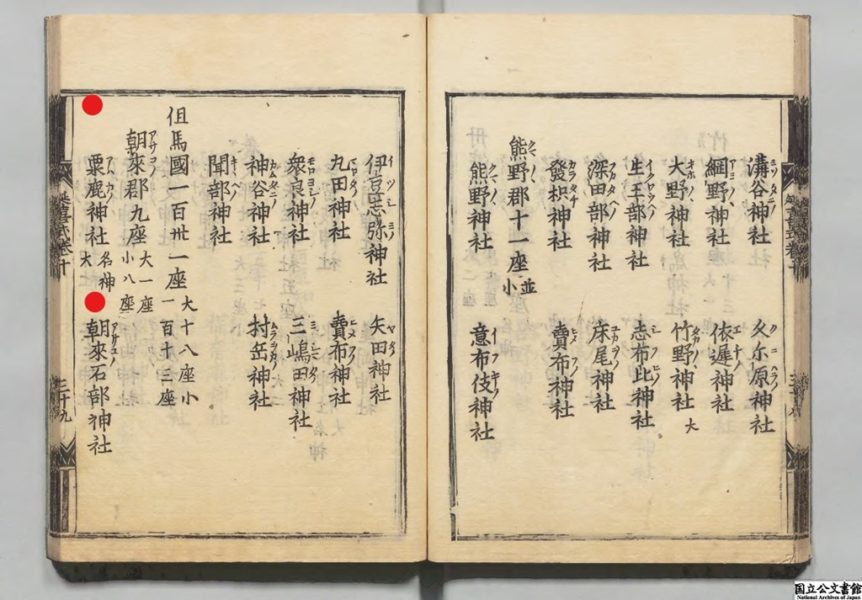
【オタッキーポイント】(Points selected by Japanese Otaku)
あなたが この神社に興味が湧くような予備知識をオタク視点でご紹介します
On "Hikomasu no mikoto" of the god of the festival
It is considered to be the third prince of the 9th Emperor Kaikai.
In "Kojiki", it is referred to as "Hikoza-o" in "Nikko Zao-oh" and "Nihon Shoki" as "Hikoza-o"
In Kojiki, it is a prince between Emperor Kaikai and Maruniomi (same as The 珥's Vassal) and the younger sister of the founder, The 珥, the younger sister of the son of Qiyi No mikoto.
In the company biography, the circle (rear hill) behind the main shrine of Awaga Shrine is a historic site (Goryo) of the Himo Zao buried place.
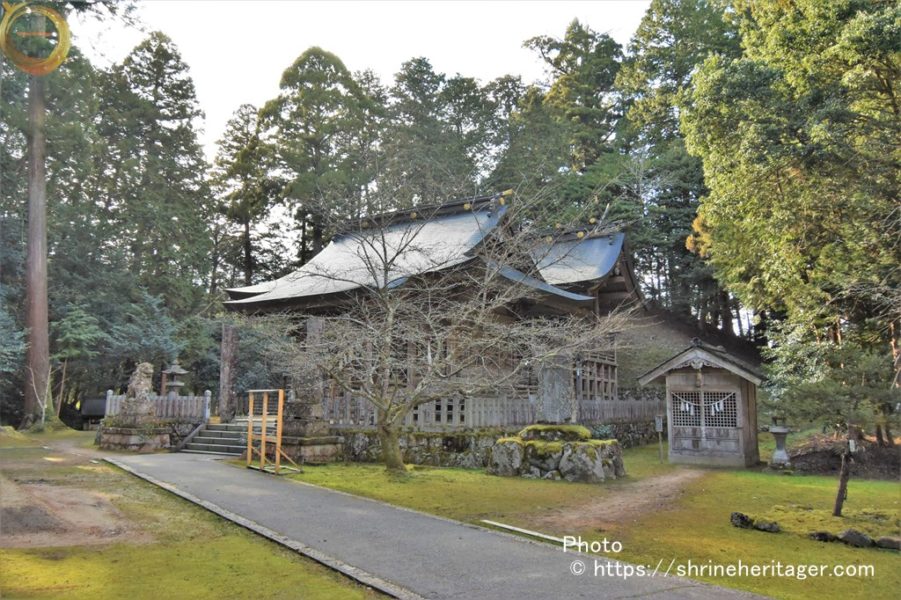
Kojiki( Kojiki) Nakamaki In the article of Emperor Sojin, it is written as the dispatch of the shogun.
"Hiko Zao" is the half-brother of the 10th "Emperor Sujin".
In Nihon Shoki, Emperor Sujin sent the son of "Hikoza-o" to Tamba as one of the four-way shoguns.
In Kojiki, Emperor Sujin ordered Nisso zao to exterminate the land spider of The Land of Tamba.
Translation
"The king of the house of the house was sent to the country of Tamba, and the Kuga Otono Mikasa (kugamimi no mikasa) was killed."
【原文参照】『古事記』刊本 明治03年選者:太安万侶/校訂者:長瀬真幸 国立公文書館デジタルアーカイブ
https://www.digital.archives.go.jp/DAS/meta/listPhoto?LANG=default&BID=F1000000000000047416&ID=&TYPE=&NO=画像利用

On the Children and Descendants of The Son of The Sunoko Zao in The Middle Volume of Kojiki
The descendants of Nisoko Zao are written as well as the descendants of the Emperor, and are written as the founders of the various clans as the royal family.
In Kojiki, it is written as
a descendant clan. Isenoshina Late Part, Ise-no-Sanazo, Hiyōda-kun, Toma-maga-kun, Sa-kun, Kusakabe-ren, Katsunonobetsu, Kin-Awakai Mosquito Nobetsu, Waka 狹 Noebetsu, Mikawa Nohobetsu, Kintankai Noanna, Nagahataberen, Yoshiarashi Late You, Harima Amune- and others
After that, it becomes strongly intertwined with successive emperors in the middle volume of "Kojiki"
According to Kojiki, there are four queens of The Princess Of Himo.
・山代の荏名津比売(enatsu hime)別名を苅幡戸辨(karihatatobe)
・沙本之大闇見戸売(saho no okuramitome)
・息長水依比売(okinaga mizuyorihime)
・袁祁都比売(woketsu hime)
According to Kojiki, there are a total of 15 children of The Son of The Zao, 12 princes and three princesses. In the article of the 11th "Emperor Taruhito", the descendants of Nisoko Zao appear in the article of "Kojiki" Naka volume
Empress of "Emperor Taruhito" Samoto Bisomei (sahohime no mikoto)
The Empress who was born between Nisoko Zao and Sahonno Dai Nokurami tosho (saho no okumuramitome)
Sahon Biko-oh (sahohiko no miko)
Prince born between Nisoko Zao and Sahonno Dai Nokuramitosho
In the rebellion against "Emperor Taruhito", it is avenged with Sahohime no mikoto.
Danba Hikota UtaSueU-o (taniwa no hikotatasumi no koshi no miko) daughter brother Hiuri (ehime), brother Hiuri (otohime)
Sahohime no mikoto is in his place at the time of his brother's rebellion, "Danba Hihiko Tatasue Sumi Usifao (taniwa no hikatasumi no ushi no miko) I invite the Emperor to 息長水依比売(okinaga mizuyorihime) との間に生まれた子です make my daughter Empress.
Therefore, my grandson will
be the queen of Emperor Taruhito. Grandson: Hibasu Hiei (Hiba Vinegar Ehime) After Emperor Taruhito's Empress, Emperor Kageyuki's mother
Grandson: Mr. Tozano (Makino Ehime) Emperor
Taruhito Grandson: Emperor Taruhito, his younger brother Hisuri Life
Among the five children with okinaga mizuyorihime, there is king kamimune (kamone no miko), and this daughter becomes the queen of the elder brother Daiusui (osu no mikoto) of Yamato takene
The brothers of Akebono and 莬 who accompanied the visit to Izumo of "The Prince who does not say"
It is the child of The Omata no miko who was born between Nisoko Zao and Yamashiro's Enazu hime.
Born with wontsu hime, Yamashiro-no-Otsuki Masakao (yamashiro no otsukumawaka no miko) is the great-grandfather of Empress Jingong.
On the Ancestors of Empress Jingong
Prince Sunoko is the paternal ancestor of Empress Jingong.
[Mother of Empress Jingong]
Tennichi-Tato-Tako-Ma-Ro-Suku-Tara-Mahi-Mud-Tako-Mana-Machi-Ki-Tako-Ma-Hito-Taka-A-Katsuragi-Hit-and-Go
[Father of Empress Jingong]
Emperor Kaika - Hiko Zao - Yamashirono Daitsuki Shinwakao - Buddha Yonerai king - Schonaga-juku
In the story of Awaga shrine (awaga shrine), it is said that Empress Jingong had a triumph later on because there was a divine aid during the Silla expedition (363).
Another mausoleum of hikomasu no mikoto is the Hiko Zamei Tomb (hikoimasu no mikoto no kaka) at Ibano nishi Shrine (Iwata Nishi, Gifu City, Gifu Prefecture).
See also the article of Ibanonishi Shrine
スポンサーリンク
Visit the Shrine (Pray at the Shrine)
I introduce the state when I visited this shrine.
Get off at Shandong IC on the Kita-Kinki Toyooka Expressway 750m by car for about 2 minutes.
There is an open land at the foot of Mt. Ashiga, and it is Awaga.
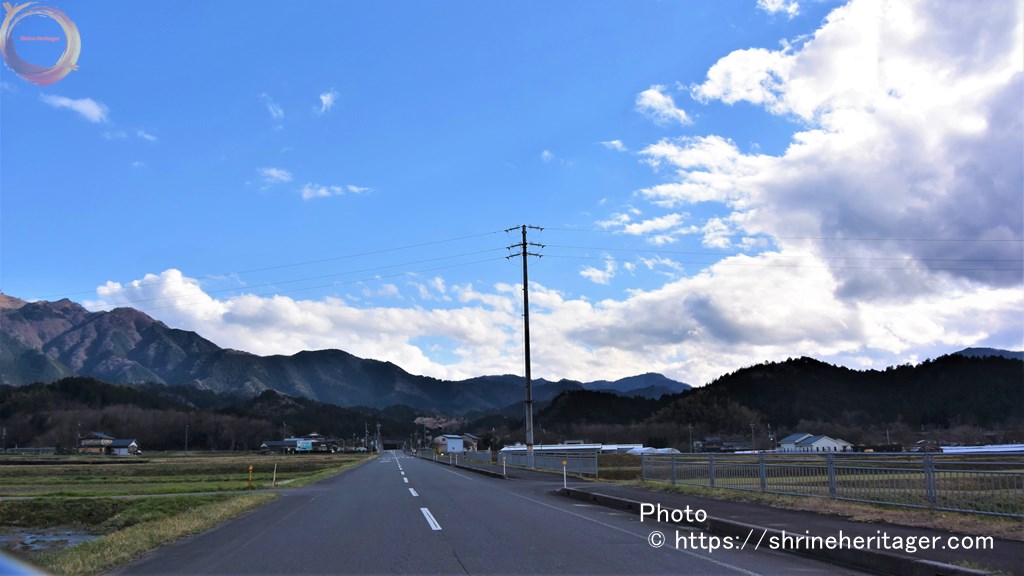
The "tomb" that looks like a small island in the basin is the forest of the guardian of
Ashiga Shrine.
御祭神の日子坐王(hikoimasu no mikoto) 開化天皇の第三皇子の古墳と伝わります
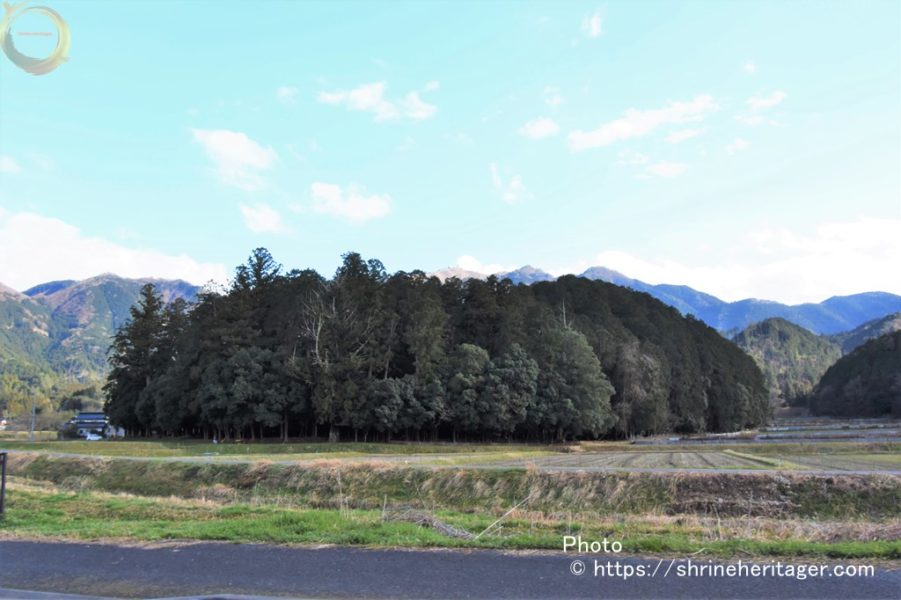
If you cross the bridge like the God bridge that hangs over the Ashaka River, a torii gate will be built on the north side of the guard's forest, and it will be a parking lot.
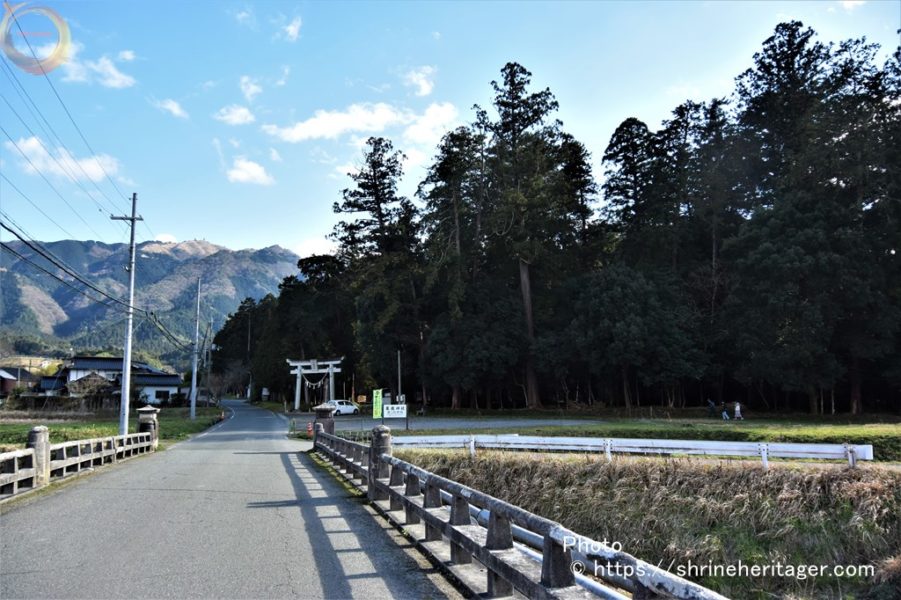
Arrived at Awaga Shrine
There is a white "torii" on the north side, a company
name mark, and a flat forehead called "Ashiga Shrine". In front of the torii base stone, "a pair of sakaki is inserted into a conical embankment and enshrined."
It's a very sacred heart. I'm going to bow through the torii gate.
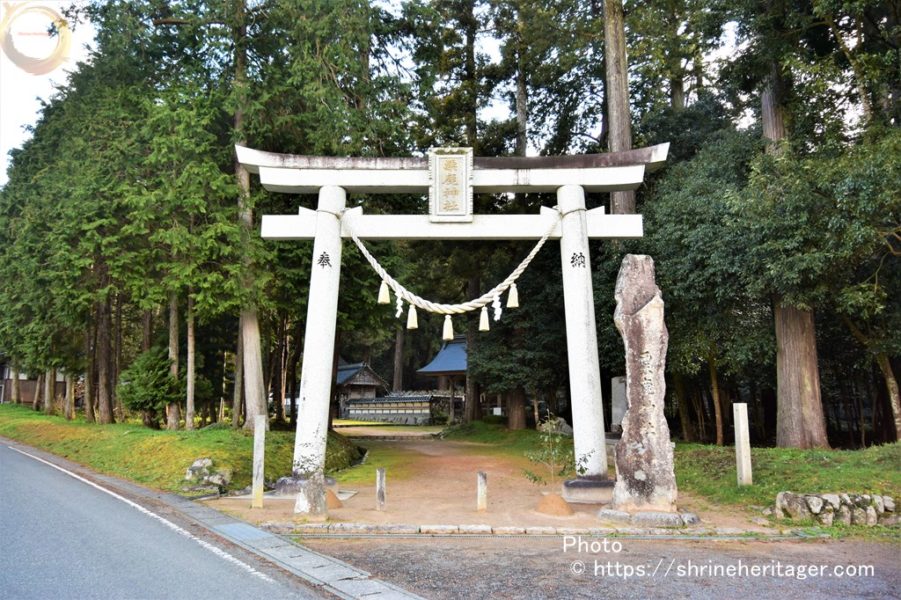
The precincts are clean and clean, and on the right hand side of the approach, there is a fence and it is an inner precinct.
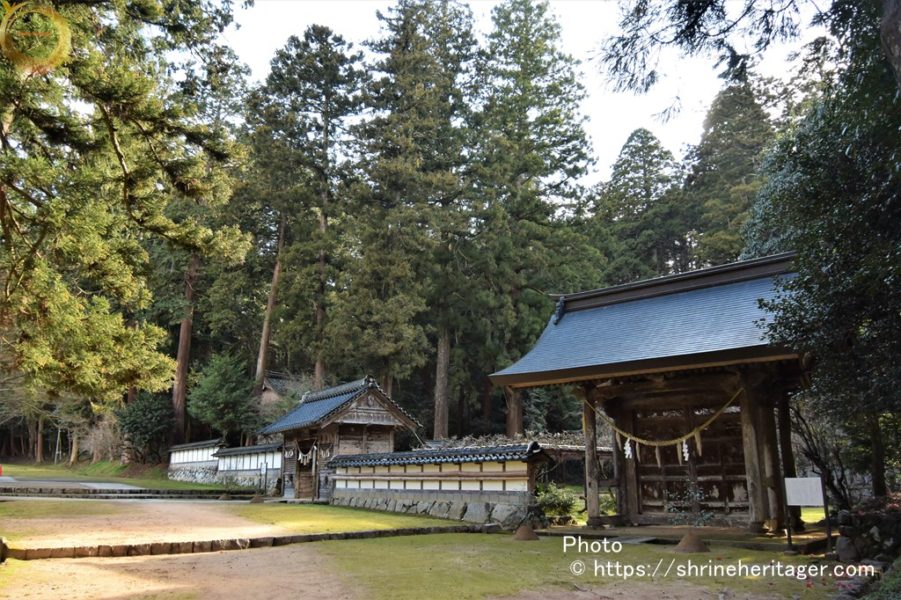
A pair of sakaki is inserted into a conical embankment and enshrined in front of the "chokushi mon"
The trust of the imperial court is thick, and the record remains that there were four imperial servants in the great difficulty of the country, but the year of its foundation is unknown, and the main shrine was burned down by fire, but this gate seems to have escaped.
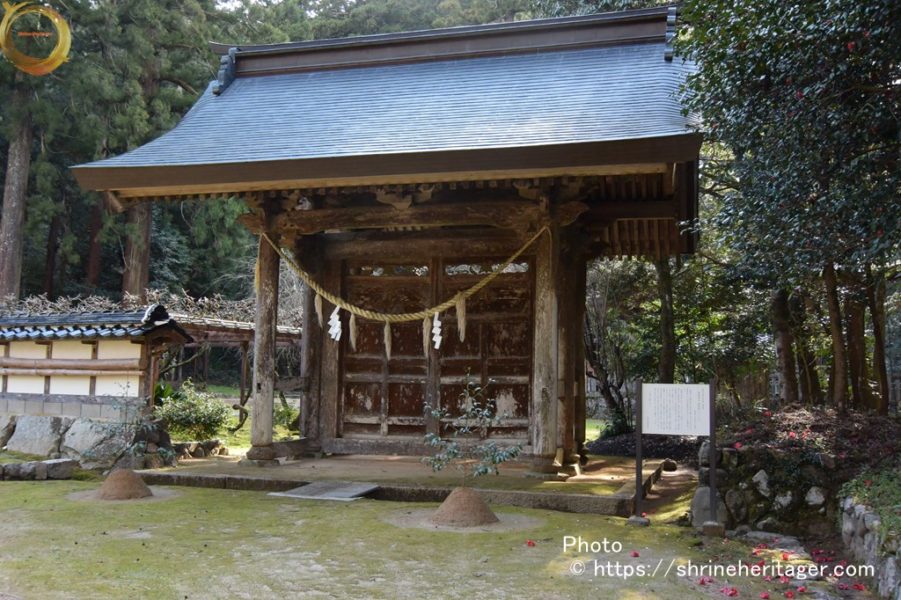
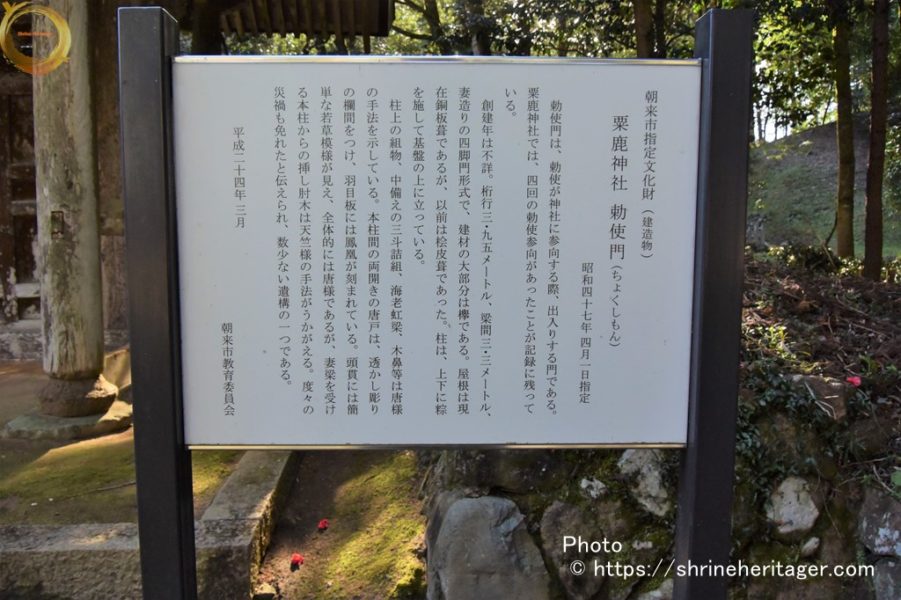
The left hand of the approach is the office of the company, and the seal etc. are worshiped at the god tag awarding office.

On the right hand side of the approach, "The statue of the god of the color 倚 the wooden work" stands one-to-two bodies.
A pair of sakaki is inserted into a conical embankment and enshrined here.
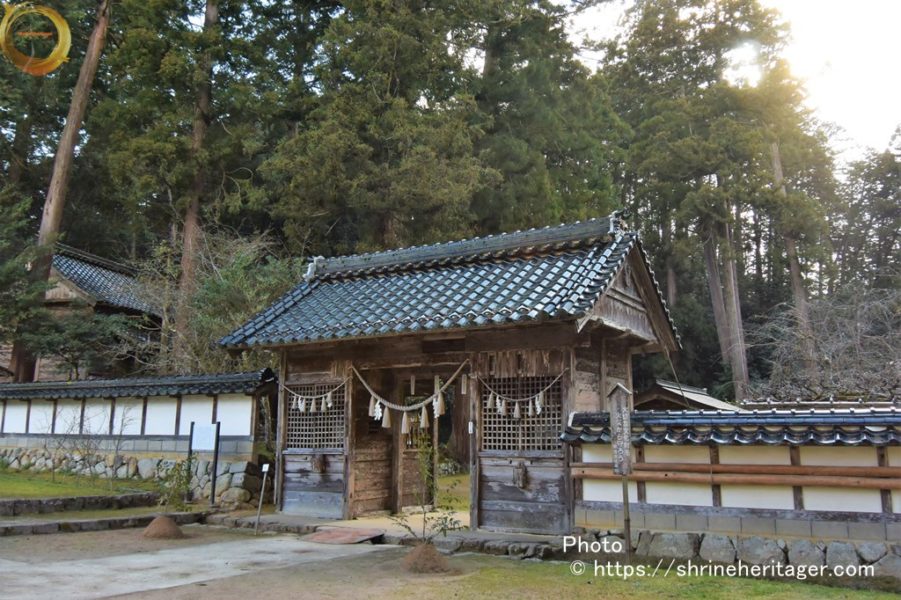
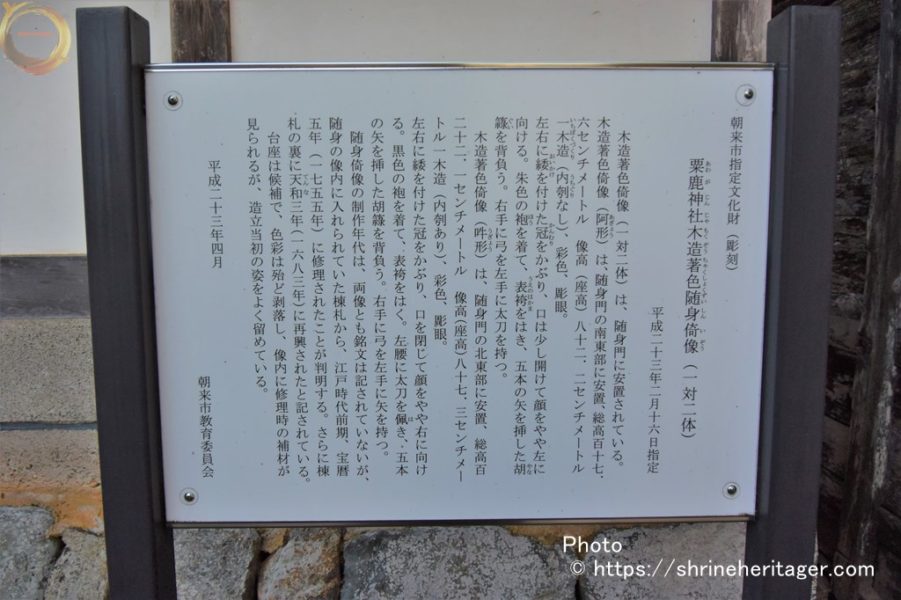
When I go through the Gate and look back, there is a very splendid "wooden colored Komainu statue" sitting on a pair just behind the god.
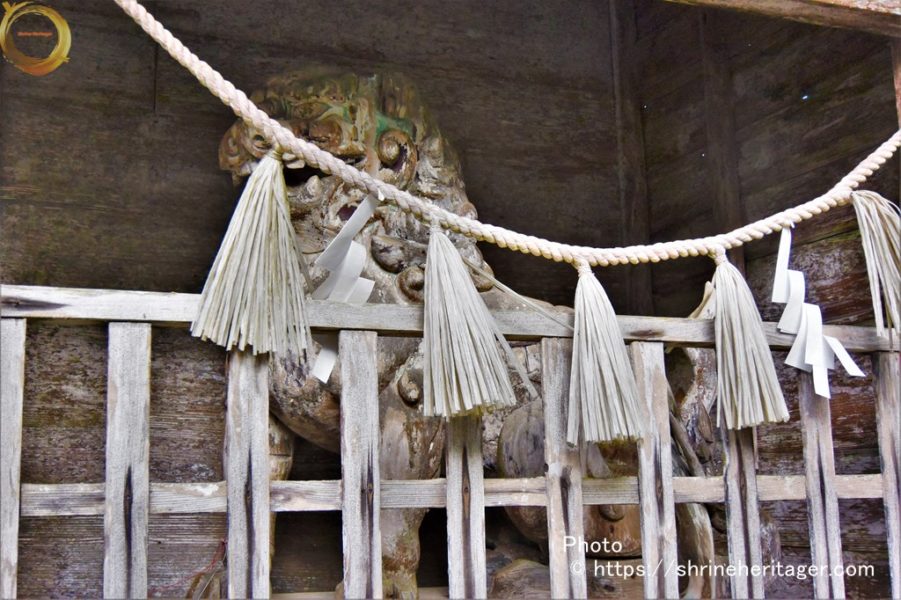

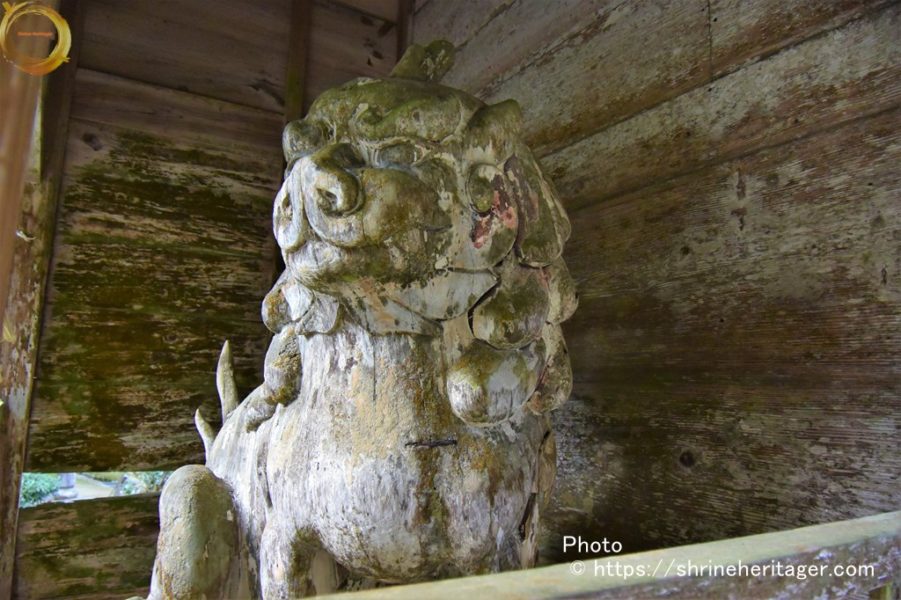
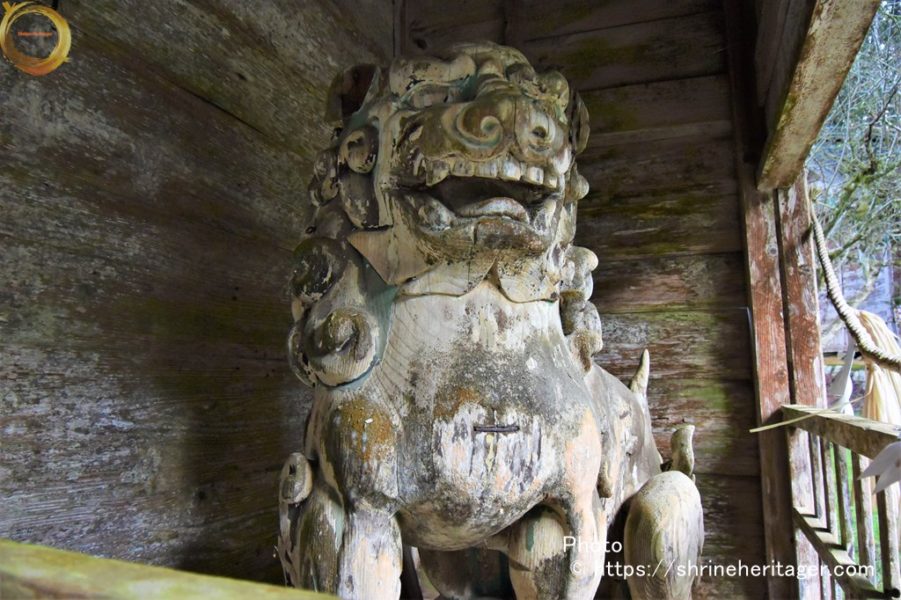
Right to the right is a bamboo bottle with water dripping and sakaki, which is also a beautiful temizusha.
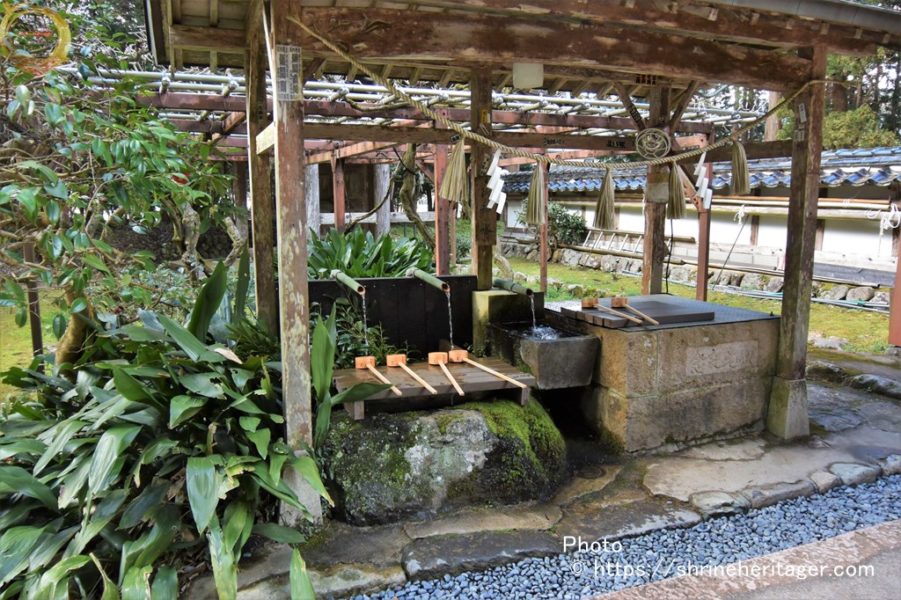
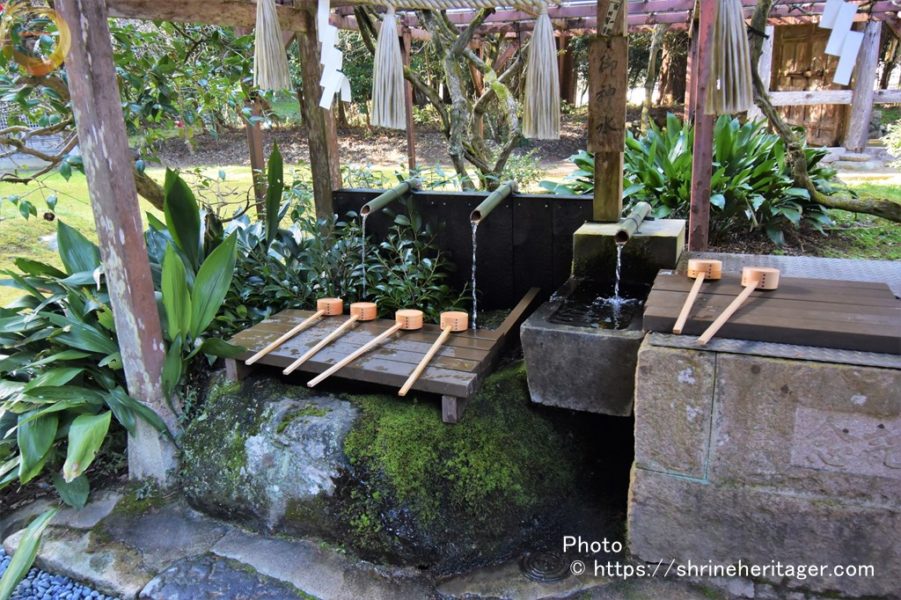
On the left is
a shrine in the precincts. Temman Palace
"Lord" Michizane Kanhara (sugawara no michizane ko)
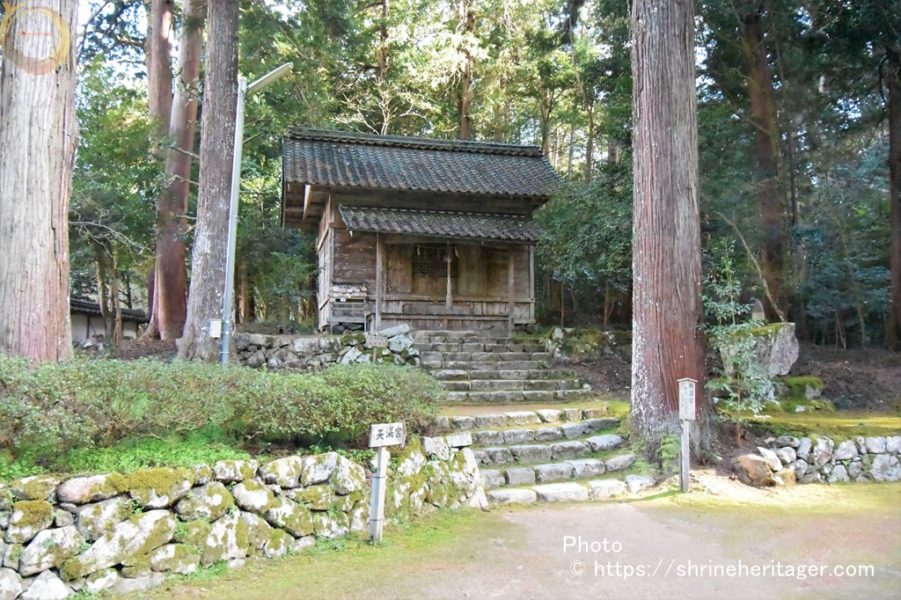
There is a ring in the center of the precincts, and a shrine building stands on the other side.
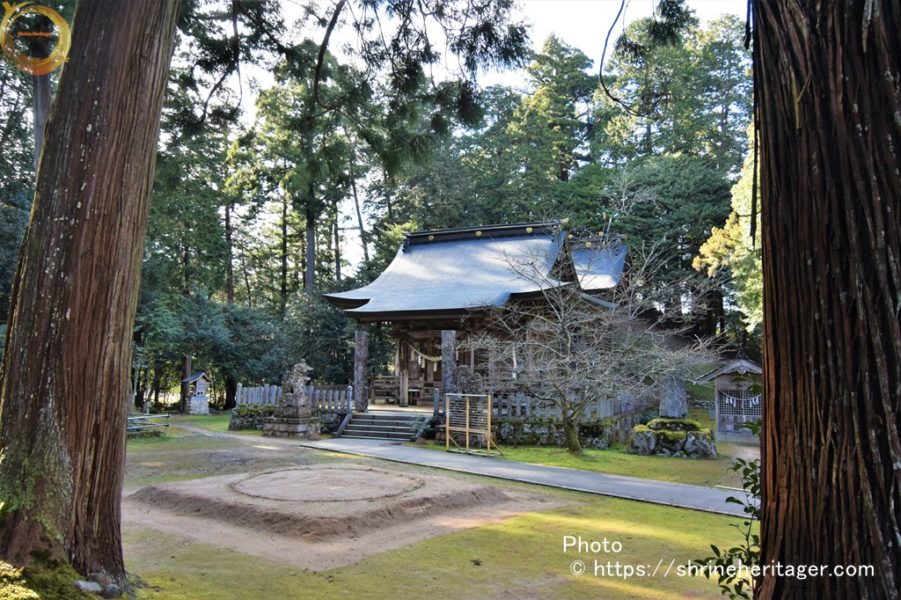
There is a shrine in the
precincts on the right side of the shrine. Sarutahiko Shrine
"Lord" Saruta Hikogami (sarutahiko no kami)
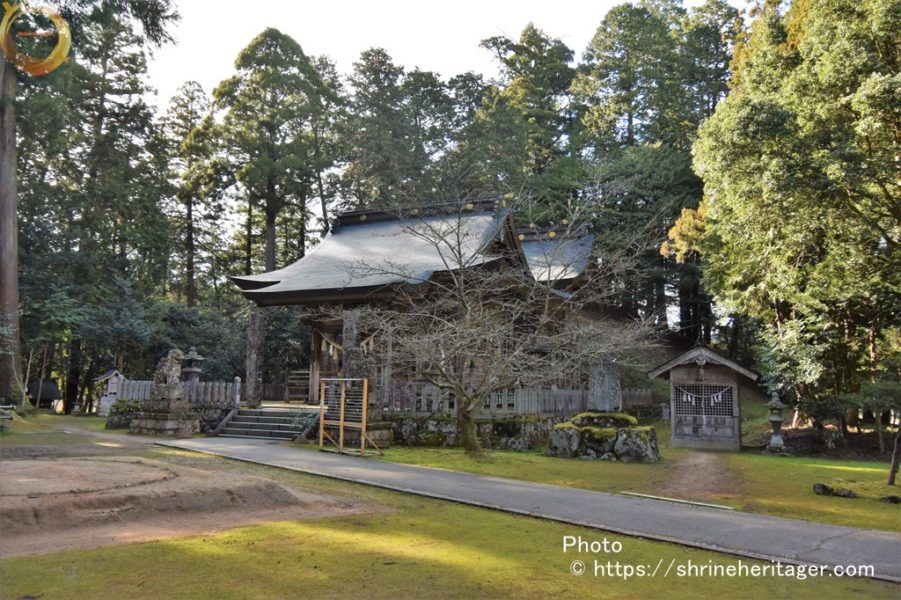
A solemn shrine is built.

Komainu's position is the opposite of usual,
and the left side is holding a child. In front of Komainu, a pair of sakaki is inserted into a conical embankment and enshrined.
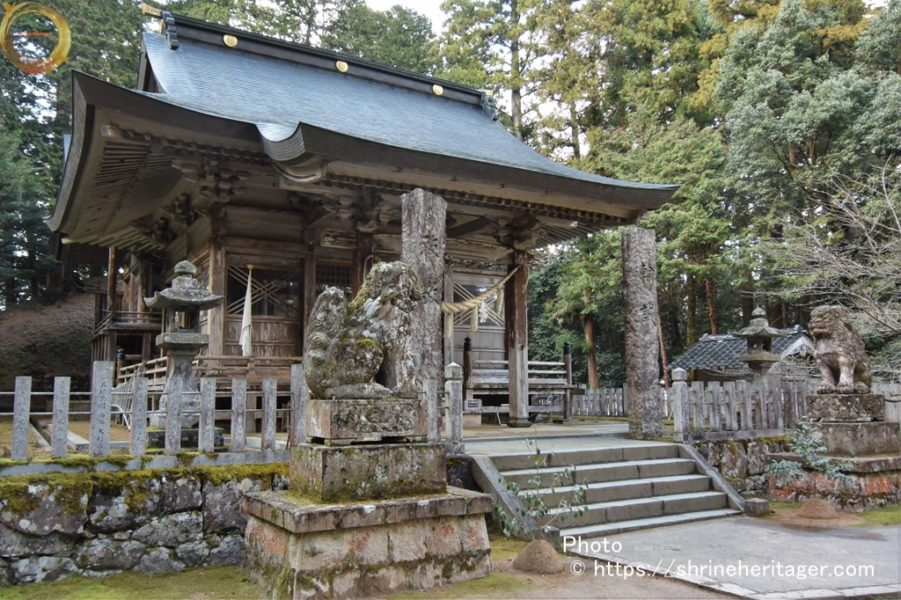
I'm going to go to the shrine.
I'm sing a lot of money.I wish you all the best..
I pray with my hands together, hitting a high hand that can't reach the god of worship who bows and settles while wishing to be in accordance with your divine power.
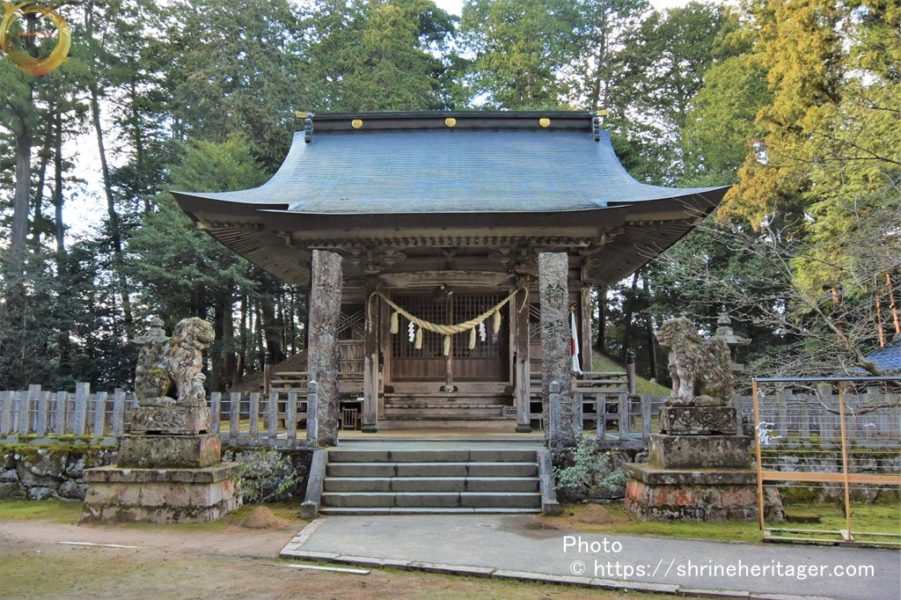
look up at the main shrine from the left hand.
The circle in the back of the main shrine is said to be the tomb of the god of the festival "Thagozao"
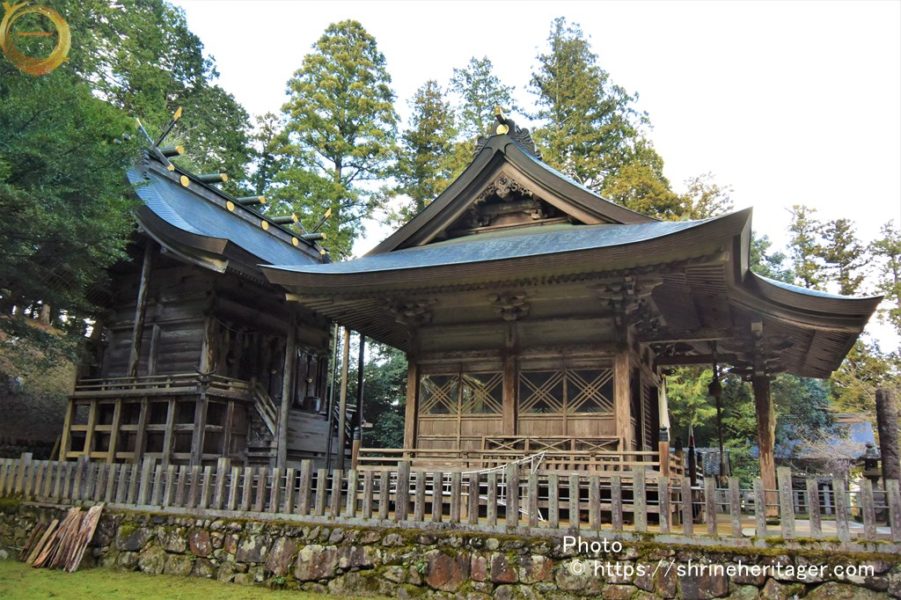
There is a shrine in the precincts on the left side of the main shrine.
Tokoura Shrine
"Lord" Daiki God (onamuchi no mikoto)

There is a shrine in the precincts on the left side of the shrine.
Itsukushima Shrine
"Lord" Ichikijima Himemei (ichikihime no mikoto)
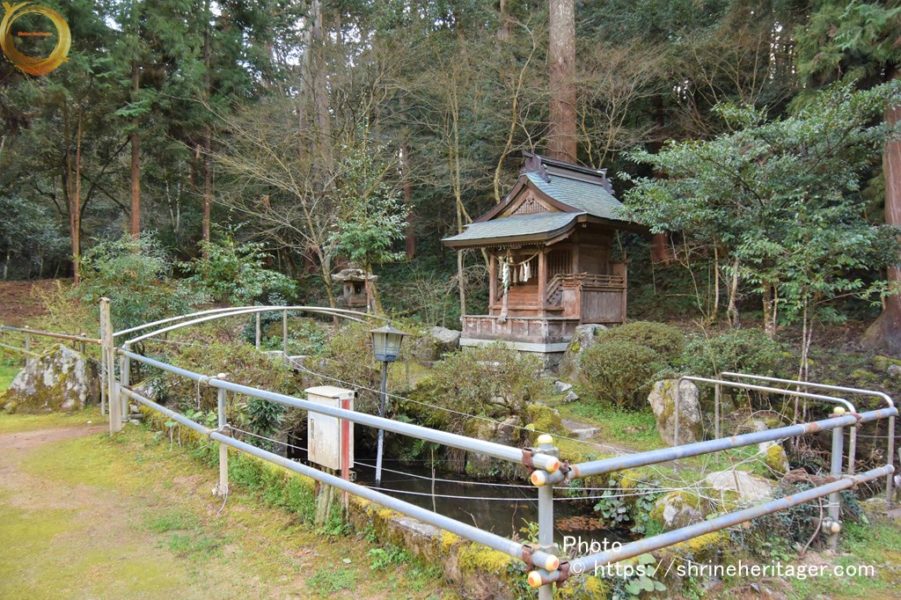
We went through the torii gate in the back hill, climbed a steep mountain path, and visited the shrine.
Inari Shrine
"Lord" ukemochi no kami
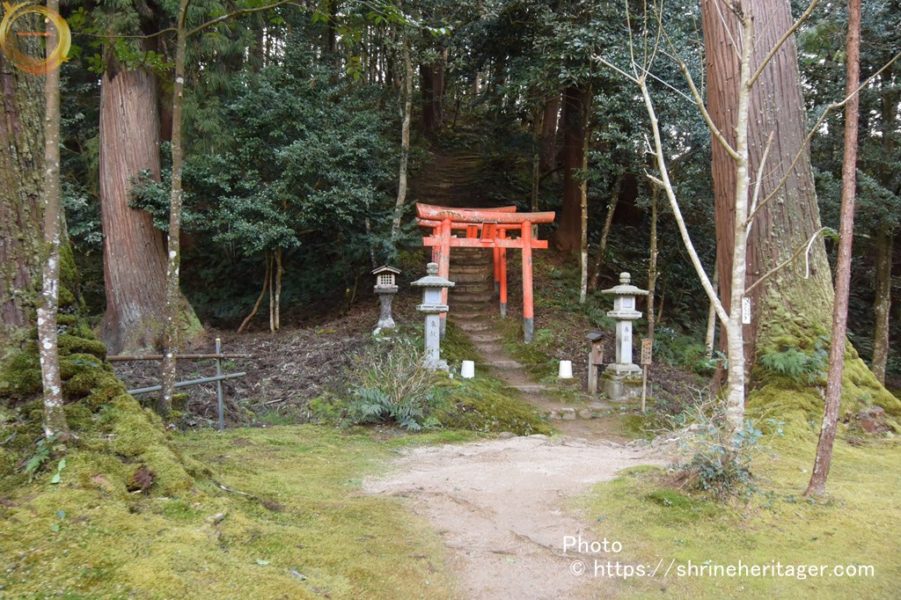
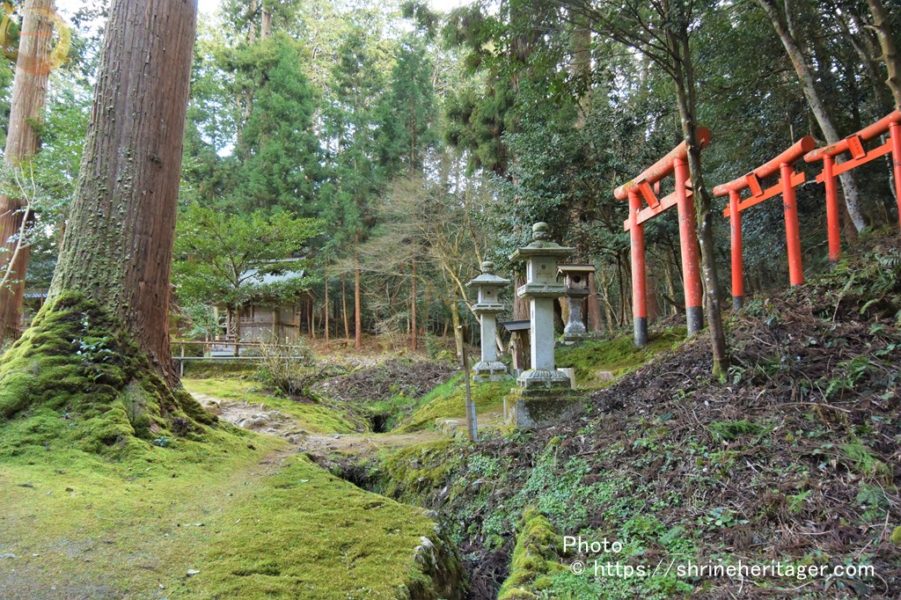
I visit the precincts next to the torii gate of Inari Shrine.
・ Myoga Shrine
"Lord" Kusano Himemei (kayanohime no mikoto)
It is said that the sacred crest of Awaga Shrine "Hug Mago" comes from this myoka shrine.
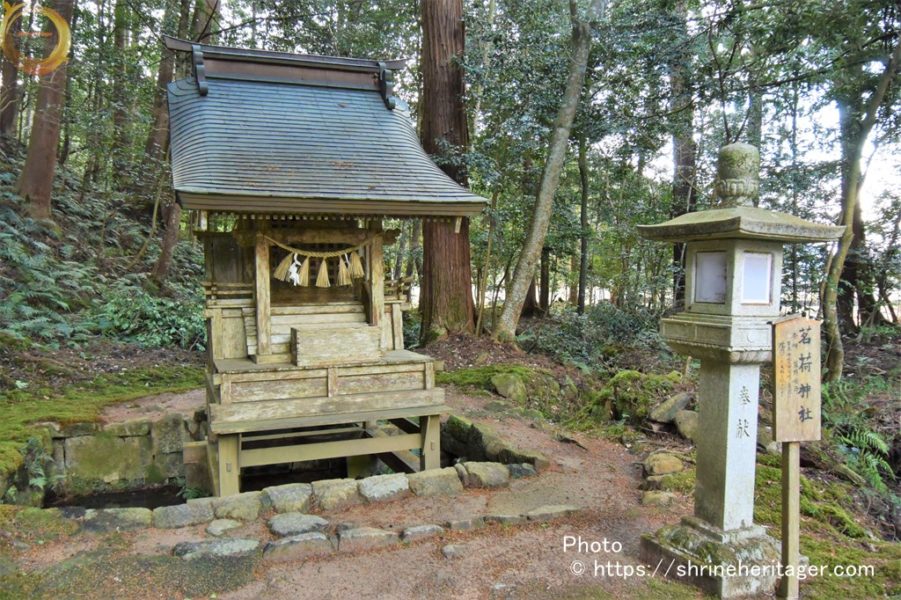
Is there a lot of
rain that the precincts are mossy? It was heavy rain when I visited before.
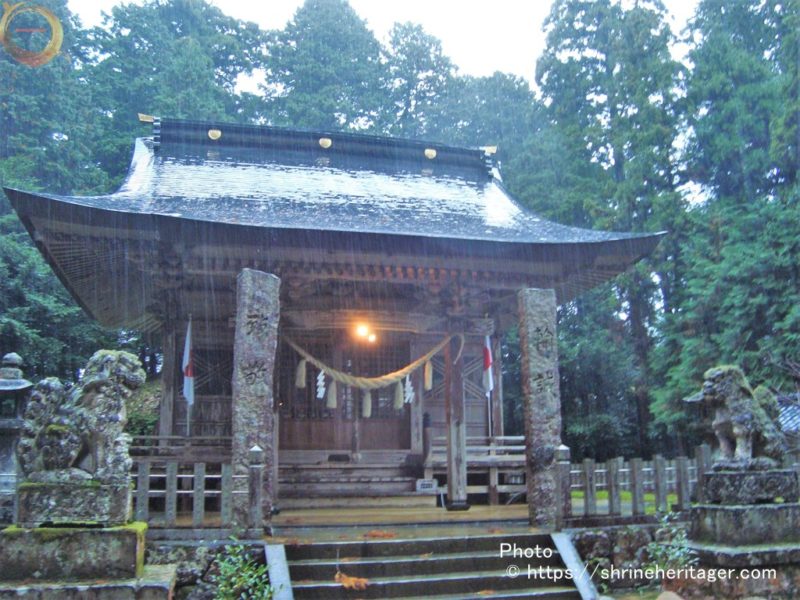
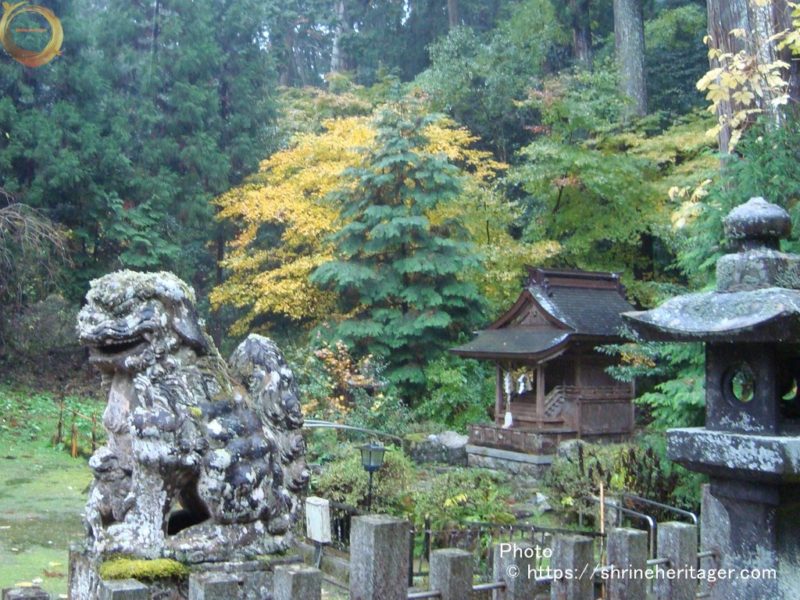
When you return to the approach from the front of the shrine, there is Tenmangu Shrine over the ring, and there is a company office beyond the earthen wall.
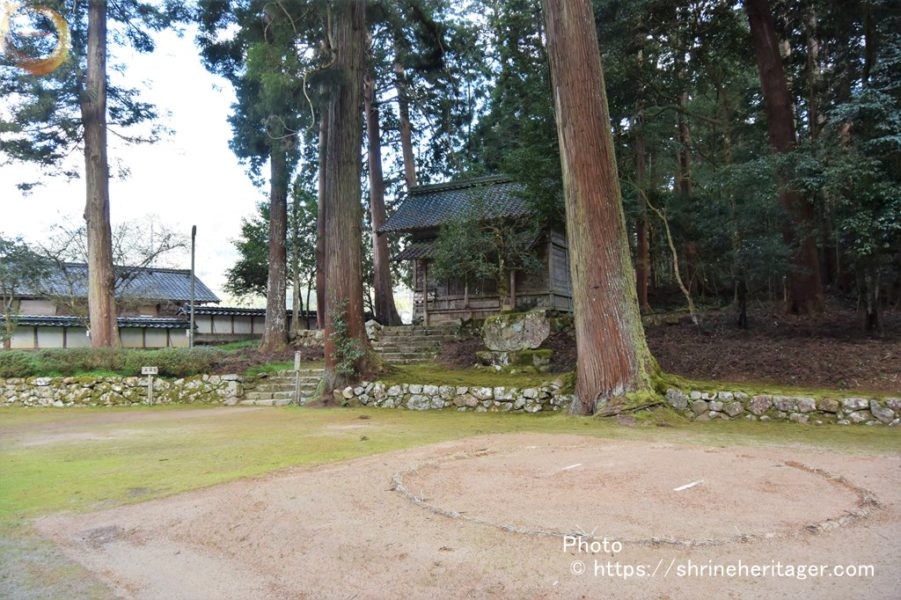
I passed through Sui Jinmon Gate and looked back and bowed.

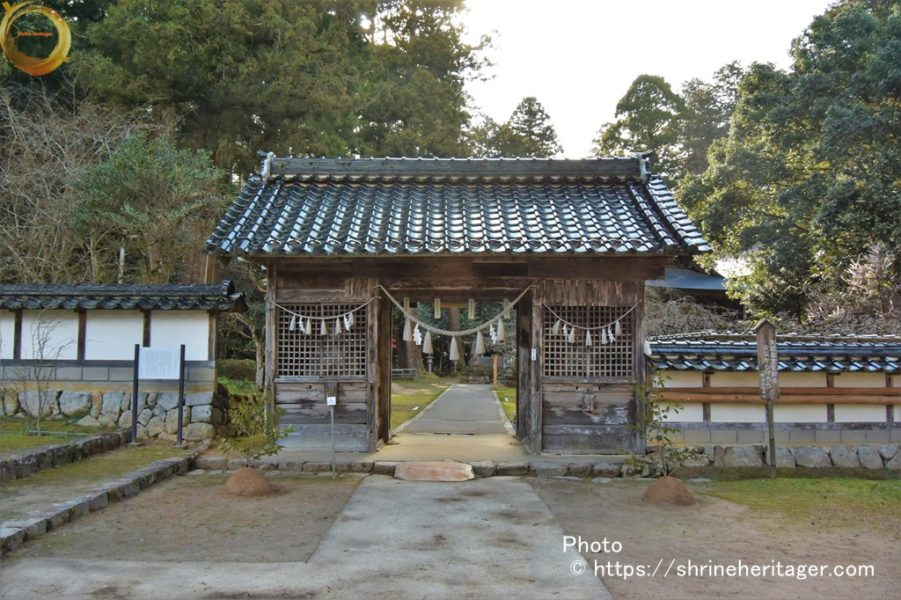
After the priest and the discourse at the office, return the approach, look back through the torii gate, and bow
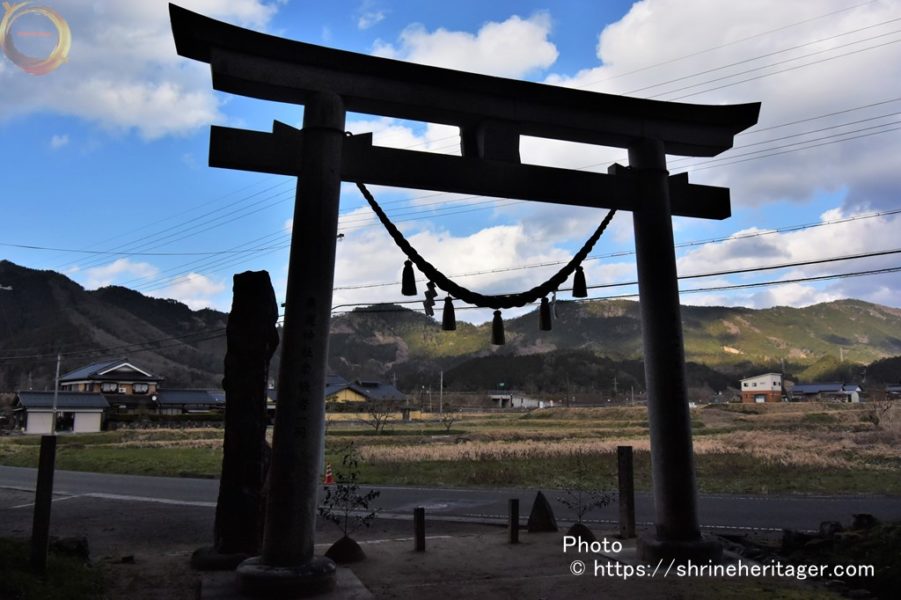
スポンサーリンク
神社の伝承(Old tales handed down to shrines)
I introduce the thing related to this shrine and the literature described.
In each book, the shinto floor was raised between 845 and 874.
Tradition written in "Tsuku Nihon Koku Kokuki"
"Tsuku Nihon Koku Koku" deals with the 18 years of the 54th Emperor Ninmei (833-850)
Translation
"Jowa 12 (845) July 16 Tamba Province "Izumojin" Tajima Country "Izushijin", "Yobujin""Ashigajin" Minokuni "Inabajin" and the 5th place down from the no-order"
[Reference] National Archives Digital Archives "Continued Nihongoki" (869) Sadakan 11 years completion Winner: Fujiwara Ryobo / School revision: Tateno Spring Festival Publication book Hiromasa 2007 [former brewer] Ministry of Home affairs
https://www.digital.archives.go.jp/DAS/meta/listPhoto?LANG=default&BID=F1000000000000047680&ID=&TYPE=&NO=
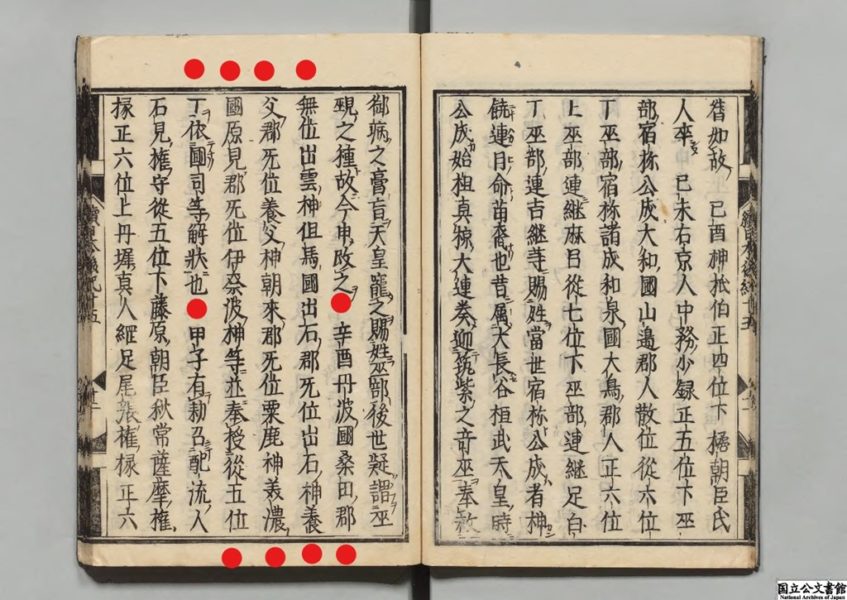
Tradition written in "Nihon sandai jitsoku"
The Sixth
Of the Six Kingdoms History, compiled in the Heian Period (established in 1991) Cheonan 2nd year (858) August - 3rd year of Ninwa (887) 30 years
Translation
"10 years (868) December 27 Tajima Country "Izushi-jin", "Yobu-jin""Ashika-jin" and "From the top of the fifth place to the fifth place""Sadakan 16 years (874) March 14 Tajima country "Izushi god", "Yobujin""Ashika-jin" and positive 5th place from the bottom of the right fifth place"
[Reference] National Archives Digital Archives "The Third Generation of Japan" (901) The first year of Enki was established by Tokihei Fujiwara / School Revision:
Matsushita Mibayashi Published Book (Published by Hirofumi) 20 books [Former Kuraya] Autumn Leaves Yama Bunko https://www.digital.archives.go.jp/DAS/meta/listPhoto?LANG=default&BID=F1000000000000047721&ID=M2014093020345388640&TYPE=&NO
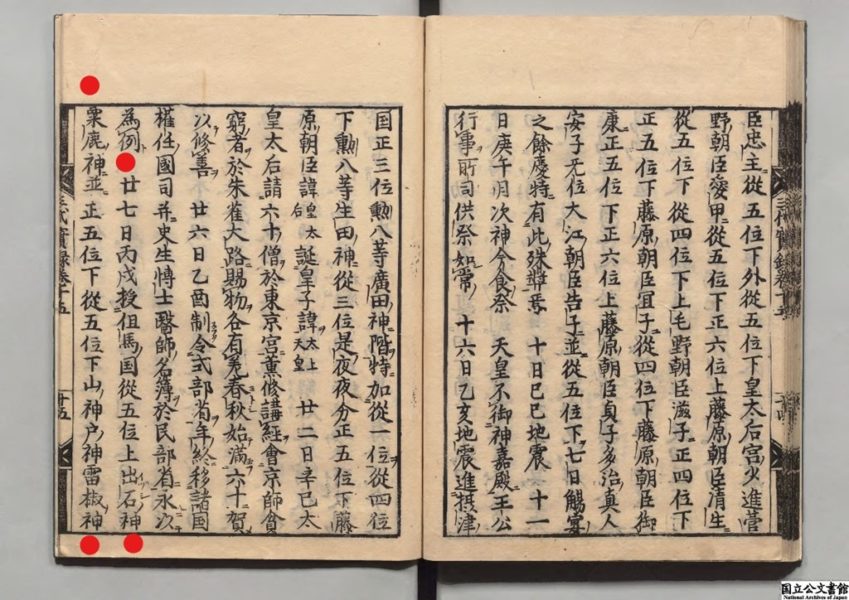
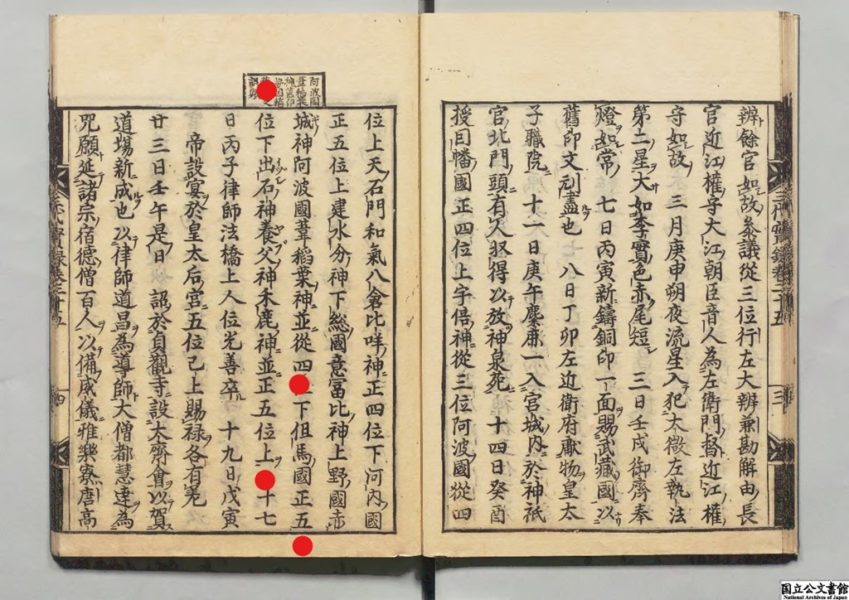
It is said that it is the origin of the name of the deer, and it is said that the deer appeared from Mt. Ashiga and taught farming to people as the origin of the name of the deer according to the company biography of more than 2000 years, and it is the best old shrine in Tajima country where it is said that the deer is enshrined.
"hai" (90-degree bow) at Awaga Shrine


